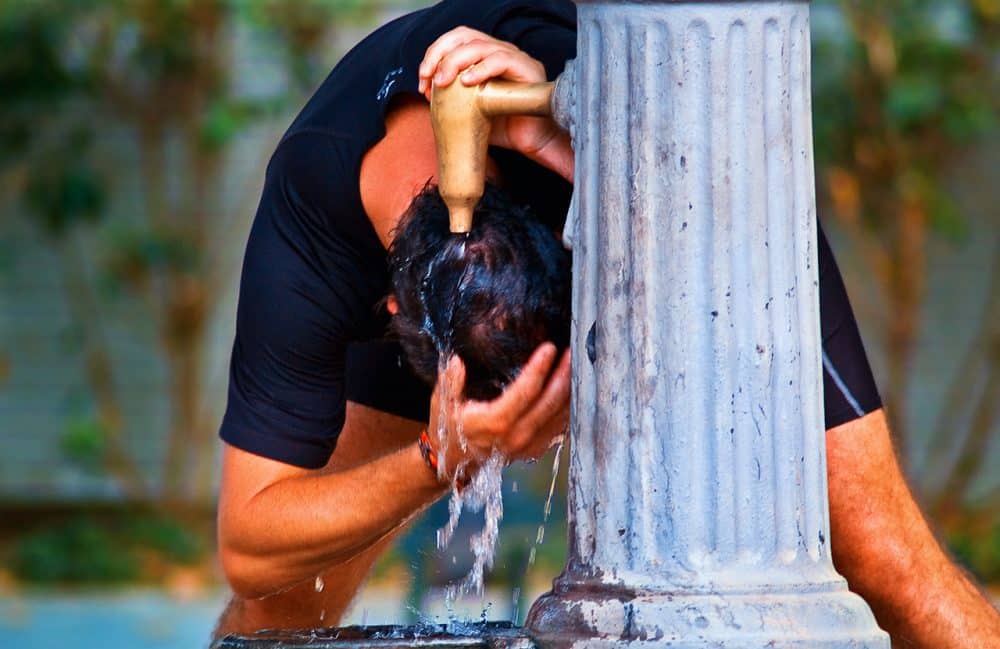There are times when to enjoy the summer becomes complicated, and most of all want it to be over and autumn has arrived. Such ideas most often during the hellish heat like the one that covered the North-Eastern part of the United States.
Already now the street is unbearable heat, and in early July temperatures, according to forecasts by Accuweather, will rise to extremely high levels. In the first two days of the coming month figures may even exceed a century, a record for this period. At least what to expect — 35-37.7 ºC. A warning about the extreme heat released for new York, Vermont, Connecticut, Illinois, Iowa, Missouri and Michigan.
The heat will be accompanied by high humidity, making it will be even harder to move, especially children, the elderly suffering from cardiovascular diseases and those who work on the street.
A dangerous heat wave will send AccuWeather RealFeel® Temps over 100F in much of the central and eastern US this weekend. Heat advisories have been issued, including all of:
New York
Vermont
Connecticut
Illinois
Iowa
Missouri
Michigan’s Lower Peninsulahttps://t.co/KKEbTnn0BJ pic.twitter.com/SpGx2F2VqM
— AccuWeather (@breakingweather) June 29, 2018
Hot and humid conditions will continue on independence Day. Should take this into account, if on the occasion you have planned an outdoor Seating.
How to escape from the heat in the big city
The addresses of the cooling centers in new York
The hardest part the heat is transferred to the cities. First, while high temperatures and stagnant air, mingling with car exhaust, it becomes dangerous to inhale. Secondly, a huge amount of brick and concrete surfaces along with the surface of the roads accumulate heat, and retain it at night. To make it easier for residents of extremely hot days in many cities operate cooling centers. New York is no exception. Addresses and work schedule of life-saving items that are already opened can be found on the city website or by calling 311.
What happens to the body in the heat
The body absorbs heat from the environment. Normally, the body gets rid of excess, starting the mechanisms of thermoregulation. However, if the temperatures are above the average in a long time, the natural mechanisms fail. The higher the humidity, the greater the likelihood of such a development. The last degree — heat stroke where the body temperature can rise to 40 ºC or higher.
During heat stroke all the processes in the body gradually stops, and disables the hypothalamus natural cooling system — sweating. Without it, the control of body temperature is lost — this starts a dangerous chain reaction that can have fatal consequences.
The weekly newsletter!
Subscribe to be the first to receive urgent news, it’s free
By signing, I agree to receive in my Inbox weekly newsletter USA.ONE
Thank you very much for the subscription!
As may occur heatstroke:
- Brain swelling, headache, convulsions, hallucinations, confusion or loss of consciousness, and in severe cases coma;
- The increase in heart rate, decrease in pressure, disruption of blood circulation, increasing the risk of heart attack;
- Nausea, vomiting, damage to certain parts of the intestines;
- The lack of blood in the kidneys and their lack of oxygen, decreased production of urine, kidney failure;
- Thrombosis, insufficient blood supply of organs;
- Muscle weakness, involuntary spasms.
Without urgent medical help, these processes can lead to death.
How to prevent heat stroke
In the heat you must minimize sun exposure — it is better to stay indoors with the air conditioning and do not forget to drink plenty of water.
If this is not possible, remember:
- Should dress in light and loose clothing is in any case not to neglect a hat and drink plenty of fluids.
- Need to postpone exercise. Strength exercises increase the risk of heat stroke. Especially if you are not accustomed to exercise in the heat.
- Alcohol, stimulants, decongestants, beta-blockers, diuretics, antidepressants and psychotropic reduce the body’s ability to regulate heat. On hot days it is definitely worthwhile to give up or reduce use to a minimum. If this is not possible, carefully monitor your condition.
- At the first signs of heat stroke such as headache, nausea, and fatigue, immediately go to a cool room.
- People with heart disease, lung, diabetes, obesity and suffered heat stroke in the past, worse than others to tolerate hot weather and must be very careful.
How to survive the heat? Important expert advice

flickr.com/Carlos Lorenzo/CC
Don’t forget that the temperature can exceed normal levels in a matter of minutes, and it should be prepared in advance. According to the new York Department of health, 80% of residents who died as a result of thermal shock, got it at home. They were mostly the elderly and patients at risk.
Experty is recommended to follow some rules.
The first symptoms:
- hot and dry or cold and clammy skin,
- the feeling of pulsation of her temples,
- redness of the face,
- nausea, dizziness and weakness.
- hallucinations and disorientation,
- shortness of breath,
- strong and frequent pulse.
First aid:
- to take the patient into the shade
- put a cold compress on the head and chest.
- give plentiful drink
- to RUB the limbs to improve blood circulation.

I hope You’ll cope with summer heat. Be healthy!